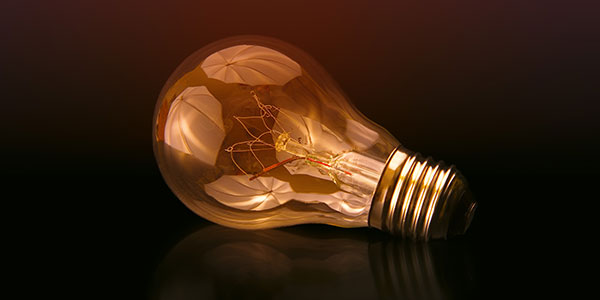The 10 Most Scariest Things About Fascia And Soffit Specialists
본문
Understanding Soffit and Cladding: Importance, Types, and Installation
Soffit and cladding are two necessary parts of a structure's exterior that often go undetected but play a critical function in both looks and performance. While soffit describes the material that covers the underside of eaves or overhangs, cladding refers to the product used to the outside of a structure to provide it with a protective layer and a visually enticing finish. This comprehensive post will explore the types, significance, advantages, installation, and regularly asked concerns concerning soffit and cladding.
Importance of Soffit and Cladding
Both soffits Fascia And Soffit Specialists (117.72.50.110) cladding serve significant purposes for building and architectural design:
Soffit
- Ventilation: Adequate soffit ventilation permits air flow in the roof area, which helps regulate temperature level and humidity, decreasing the risk of mold and rot.
- Security: Soffits protect the rafters and eaves from water damage and bug problem.
- Aesthetic Enhancement: Well-designed soffits enhance the total appearance of a building, supplying a completed appearance to roof overhangs.
Cladding
- Insulation: Cladding assists to insulate the structure, enhancing energy performance by preserving interior temperatures.
- Weather condition Resistance: It secures the building from components such as rain, wind, and snow.
- Visual Appeal: With a range of products readily available, cladding allows architects to create aesthetically stunning exteriors.
- Maintenance: High-quality cladding lowers the requirement for regular maintenance and repairs.
Types of Soffit and Cladding
Soffit Types
Soffits can come in different products, consisting of:
- Vinyl: Known for its low maintenance and weather-resistant homes.
- Aluminum: Durable and resistant to rust but might damage simpler.
- Wood: Offers visual appeal however needs regular maintenance and treatment for weather condition resistance.
- Fiber Cement: Combines toughness with the look of wood, resistant to rot and insects.
Cladding Types
The choice of cladding products can considerably affect both aesthetics and performance. Common types consist of:
- Vinyl Cladding: Cost-effective, lightweight, and readily available in various styles and colors.
- Wood Cladding: Naturally lovely, however demands routine treatment and maintenance.
- Brick: Extremely durable and fire-resistant however more expensive and needs professional installation.
- Stone and Stone Veneer: Offers a classic appearance and unequaled toughness, ideal for upscale homes.
- Fiber Cement: Mimics wood or masonry with a fraction of the maintenance, resistant to weather and insects.
- Metal Cladding: Often used in modern styles, supplies a commercial appeal and substantially withstands weathering.
Contrast of Soffit and Cladding Materials
The following table lays out the key features and characteristics of numerous soffit and cladding products:
| Material | Maintenance | Toughness | Aesthetic Appeal | Cost | Insulation Property |
|---|---|---|---|---|---|
| Vinyl Soffit | Low | Medium | Good | Low | Low |
| Aluminum Soffit | Medium | High | Fair | Medium | Low |
| Wood Soffit | High | Low to Medium | Excellent | Medium | Low |
| Fiber Cement | Low | High | Excellent | Medium | Medium |
| Vinyl Cladding | Low | Medium | Great | Low | Medium |
| Wood Cladding | High | Medium | Outstanding | Medium | Medium |
| Brick Cladding | Low | High | Exceptional | High | High |
| Stone Veneer | Medium | High | Exceptional | High | High |
| Metal Cladding | Low | High | Fair to Excellent | Medium to High | Low |
Installation of Soffit and Cladding
The installation process of soffit and cladding differs depending on material option and regional structure codes. However, understanding the general steps included can be valuable:
Steps for Installing Soffit
- Preparation: Gather all tools and materials required, consisting of panels, nails, and safety gear.
- Measurement: Measure the location precisely to cut soffit panels to the appropriate size.
- Ventilation: Ensure appropriate airflow by integrating vents where necessary.
- Installation: Attach the panels starting from one side, ensuring they fit correctly into the established structure.
- Ending up Touches: Seal any gaps for insulation and looks.
Steps for Installing Cladding
- Structure Setup: Create a robust structure utilizing vertical battens if required.
- Insulation: If insulating, install insulation boards before cladding.
- Cutting Panels: Measure and cut cladding panels based on style requirements.
- Attachment: Secure panels utilizing suitable fasteners, guaranteeing positioning and level.
- Sealing: Seal joints and edges for weather condition resistance.
Often Asked Questions (FAQs)
1. What is the average life-span of cladding products?
The lifespan varies extensively amongst products:
- Vinyl: 20-40 years
- Wood: 10-30 years (with maintenance)
- Brick and Stone: 50+ years
- Fiber Cement: 25-40 years
2. Is soffit installation needed?
Yes, soffit installation is vital for correct ventilation and securing the roofing structure from weather condition damage, pests, and rot.
3. Can soffit be set up without cladding?
Yes, soffit can be installed separately. Nevertheless, it is typically installed in conjunction with cladding for improved aesthetic appeals and defense.
4. What elements should be considered when selecting cladding?
Important factors consist of:
- Desired aesthetic
- Climate considerations
- Spending plan restraints
- Maintenance requirements
- Energy effectiveness
5. Can I install soffit and cladding myself?
While DIY installation is possible for those with sufficient abilities, working with specialists ensures quality craftsmanship and compliance with building codes.
Soffit and cladding are crucial components of a building's outside that substantially impact looks, functionality, and energy effectiveness. Comprehending their types, advantages, and installation processes can help property owners and contractors in making informed choices. Whether utilizing vinyl, wood, or fiber cement, selecting the right materials and making sure correct installation will improve the durability and charm of any structure while maintaining its protective qualities.



댓글목록 0